
Question More, Action Knowledge.
Remember, at QMAK, we don’t just teach; we empower. We don’t just inform; we inspire. We don’t just question; we act. Become a Gold Member, and let’s unlock your child’s full potential, one question at a time.
![]()
Have you ever found yourself gravitating towards information that supports what you already believe, while conveniently ignoring anything that might challenge your views? If so, you’ve fallen victim to the sneaky trap of confirmation bias!
Confirmation bias is our brain’s tendency to seek out and focus on information that confirms our pre-existing beliefs, while discounting or dismissing evidence that contradicts them. It’s like we’re wearing special goggles that only let us see what we want to see, while filtering out anything that doesn’t fit our narrative.
Why do we do this? Well, it’s not because we’re trying to be close-minded or stubborn (at least, not always). Our brains are actually wired to take mental shortcuts and cling to what’s familiar and comfortable. Challenging our beliefs takes effort and can be emotionally unsettling, so it’s often easier to just stick with what we already know.
Confirmation bias can manifest in all sorts of sneaky ways, like:
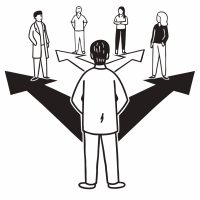
We tend to notice and remember information that aligns with our beliefs, while overlooking or forgetting anything that doesn’t fit the mold. It’s like our brain has a built-in “confirmation radar” that only picks up on what we want to see. Be sure to check out our article on “The Perils of Overestimating Knowledge“
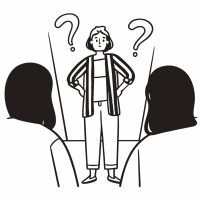
We actively seek out information that supports our views, while avoiding anything that might challenge them. We might only read news sources that align with our political leanings, or surround ourselves with people who share our opinions.
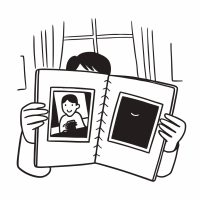
Our memories can be surprisingly selective, and we’re more likely to remember information that confirms our beliefs than information that contradicts them. It’s like our brain has a “confirmation filter” that only lets certain memories through.
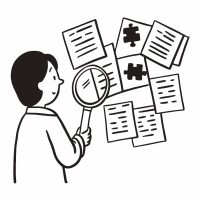
Even when faced with evidence that contradicts our beliefs, we often find ways to twist and turn it to fit our existing narrative. We might come up with elaborate explanations or excuses to dismiss the contradictory information, rather than considering that we might be wrong.
One of the most powerful manifestations of confirmation bias is the “echo chamber” effect, particularly evident in how we consume information. In today’s digital age, it’s easier than ever to surround ourselves with voices that agree with us:
This selective exposure limits our exposure to diverse perspectives and critical analysis, potentially leading to the strengthening of our biases and a diminished capacity for nuanced understanding.
While confirmation bias might make us feel more comfortable and confident in our beliefs, it can have some serious consequences:
![]() 1. Misinterpreting Reality: By only seeing what we want to see, we risk getting a distorted and inaccurate picture of the world around us. We might make decisions based on incomplete or misleading information, leading to suboptimal outcomes.
1. Misinterpreting Reality: By only seeing what we want to see, we risk getting a distorted and inaccurate picture of the world around us. We might make decisions based on incomplete or misleading information, leading to suboptimal outcomes.
![]() 2. Overconfidence: Confirmation bias can make us feel like we have all the answers, even when we don’t. This can lead to overconfidence and a reluctance to consider alternative perspectives or new information.
2. Overconfidence: Confirmation bias can make us feel like we have all the answers, even when we don’t. This can lead to overconfidence and a reluctance to consider alternative perspectives or new information.
![]() 3. Polarization: When everyone is trapped in their own confirmation bubbles, it can lead to increased polarization and division in society. We become less able to understand and empathize with those who hold different views, making it harder to find common ground and work together.
3. Polarization: When everyone is trapped in their own confirmation bubbles, it can lead to increased polarization and division in society. We become less able to understand and empathize with those who hold different views, making it harder to find common ground and work together.
![]() 4. Missed Opportunities: By dismissing information that doesn’t fit our existing beliefs, we might miss out on valuable insights, innovative ideas, or potential solutions to problems.
4. Missed Opportunities: By dismissing information that doesn’t fit our existing beliefs, we might miss out on valuable insights, innovative ideas, or potential solutions to problems.
![]() 5. Poor Decision-Making: In business and personal life, confirmation bias can lead to flawed decision-making processes. We might ignore warning signs, overlook important data, or fail to consider alternative strategies because they don’t align with our preconceived notions.
5. Poor Decision-Making: In business and personal life, confirmation bias can lead to flawed decision-making processes. We might ignore warning signs, overlook important data, or fail to consider alternative strategies because they don’t align with our preconceived notions.
So how can we break free from the sneaky trap of confirmation bias?
Here are a few strategies:
To really drive home the power of confirmation bias, let’s look at some examples of how it can play out in everyday life:
![]() As mentioned earlier, social media algorithms and our own tendencies can create echo chambers where we’re only exposed to information that confirms our existing views. This can lead to a distorted sense of reality and make it harder to understand and empathize with those who hold different perspectives.
As mentioned earlier, social media algorithms and our own tendencies can create echo chambers where we’re only exposed to information that confirms our existing views. This can lead to a distorted sense of reality and make it harder to understand and empathize with those who hold different perspectives.
![]()
Our initial impressions of people or situations can be incredibly sticky, and we often seek out information that confirms those impressions while discounting anything that contradicts them. This is why first impressions are so powerful – they can shape our perceptions and biases long after the initial encounter.
![]() Conspiracy theories often persist despite overwhelming evidence to the contrary, in part because believers are skilled at finding information that seems to support their views while dismissing anything that challenges them. This is a classic example of confirmation bias in action.
Conspiracy theories often persist despite overwhelming evidence to the contrary, in part because believers are skilled at finding information that seems to support their views while dismissing anything that challenges them. This is a classic example of confirmation bias in action.
![]() In the corporate world, confirmation bias can lead executives to ignore market trends or consumer feedback that doesn’t align with their vision for the company. This can result in missed opportunities or the continued pursuit of failing strategies.
In the corporate world, confirmation bias can lead executives to ignore market trends or consumer feedback that doesn’t align with their vision for the company. This can result in missed opportunities or the continued pursuit of failing strategies.
![]() Even in the world of science, confirmation bias can creep in. Researchers might be more likely to publish results that confirm their hypotheses and dismiss contradictory findings as flukes or errors.
Even in the world of science, confirmation bias can creep in. Researchers might be more likely to publish results that confirm their hypotheses and dismiss contradictory findings as flukes or errors.
It’s never too early to start teaching kids about the sneaky ways our brains can lead us astray. Here are some fun ways to introduce the concept of confirmation bias:
Teacher’s Note: By teaching kids to be aware of confirmation bias and actively seek out diverse perspectives, we can help them develop critical thinking skills that will serve them well throughout their lives.
While confirmation bias can lead us astray, being aware of it can also be a powerful tool for personal and professional growth. Here are a few ways to use this awareness to your advantage:
![]() 1. Improve Decision-Making: By actively seeking out disconfirming evidence and considering alternative viewpoints, you can make more informed and balanced decisions in both your personal and professional life.
1. Improve Decision-Making: By actively seeking out disconfirming evidence and considering alternative viewpoints, you can make more informed and balanced decisions in both your personal and professional life.
![]() 2. Enhance Creativity: Challenging your own assumptions and biases can lead to more innovative thinking and creative problem-solving.
2. Enhance Creativity: Challenging your own assumptions and biases can lead to more innovative thinking and creative problem-solving.
![]() 3. Build Stronger Relationships: Understanding confirmation bias can help you empathize with others and bridge divides, even when you disagree.
3. Build Stronger Relationships: Understanding confirmation bias can help you empathize with others and bridge divides, even when you disagree.
![]() 4. Continuous Learning: Embracing intellectual humility and the possibility that you might be wrong opens the door to continuous learning and personal growth.
4. Continuous Learning: Embracing intellectual humility and the possibility that you might be wrong opens the door to continuous learning and personal growth.
At the end of the day, confirmation bias is a powerful force that can shape our perceptions and beliefs in subtle but profound ways. By being aware of its influence and actively seeking out diverse perspectives, we can break free from the confirmation bubble and see the world in a more accurate and nuanced light.
So go forth and challenge your own assumptions – you might be surprised by what you discover when you take off those confirmation bias goggles and see the world with fresh eyes!
Below are three math problems and critical thinking exercises focused on Confirmation Bias, specifically designed for three age groups: Elementary, Middle School, and High School students. These exercises go beyond standard math problems by encouraging deeper analysis and reflection on how biases can influence decision-making.
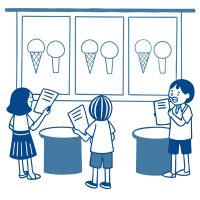


Objective: To practice considering different viewpoints and challenging assumptions.
Objective: To practice considering opposing viewpoints and challenging assumptions.
Objective: To recognize and evaluate biased information in everyday life.
Objective: To recognize and challenge confirmation bias in action.
Objective: To practice presenting balanced and unbiased information.
Watch both versions of the 3 Little Pigs and ask your child to pay attention to how the 2nd version differs.
As you watch the wolf’s version, pause occasionally to ask the children what they think about the wolf’s explanations. Do they believe him? Why or why not?
Help children relate the story to their own experiences. Have they ever misunderstood a situation or jumped to conclusions based on partial information?
Emphasize the importance of considering multiple perspectives and being open to information that challenges our initial beliefs.
Conclusion
By using this familiar story with a twist, you can introduce the concept of confirmation bias in a fun, engaging way that children can easily grasp. It provides a concrete example of how the same events can be interpreted differently based on one’s perspective and pre-existing beliefs.
Discussion Points:
After watching, you can explore several aspects of confirmation bias:
a) Initial Beliefs: Discuss how their prior knowledge of the original story might have influenced their interpretation of the wolf’s version.
b) Multiple Perspectives: Talk about how the same events can be seen differently depending on who’s telling the story.
c) Evidence Interpretation: Look at how the wolf interprets events to support his version. How does this relate to confirmation bias?
The Crucible provides a haunting demonstration of confirmation bias through its portrayal of the Salem witch trials, where initial suspicions spiral into a devastating cycle of accusation and persecution.
Through the lens of 17th-century Salem, students witness how people actively seek evidence that confirms their existing beliefs while dismissing information that contradicts them.
As accusations of witchcraft spread through the community, viewers see how confirmation bias transforms innocent actions – from a dance in the woods to a doll with a needle – into “proof” of supernatural evil.
The film’s building tension shows how this cognitive bias can create self-reinforcing cycles of fear and suspicion, where even attempts to prove one’s innocence are interpreted as further evidence of guilt.
Through its historical parallel to McCarthyism and modern-day witch hunts, the film demonstrates how confirmation bias can transform communities into echo chambers of fear, where preexisting prejudices masquerade as rational judgment.
(Verse 1)
We’re all wearing goggles, that filter what we see
Confirming our beliefs, so comfortably
Selective perception, it’s our brain’s little game
Noticing what fits, forgetting the rest, what a shame
(Chorus)
Confirmation bias, it’s a sneaky trap
Making us feel right, like we’re on the right track
But we’re missing out, on a world of different views
Confirmation bias, it’s time to break through
(Verse 2)
We seek information, that aligns with what we know
Avoiding the challenge, of letting our minds grow
Biased memory, motivated reasoning too
Twisting and turning, to make our narrative true
(Bridge)
But the consequences, can be oh so real
Misinterpreting reality, overconfidence we feel
Polarization growing, in our society
It’s time to burst the bubble, set our thinking free
(Chorus)
Confirmation bias, it’s a sneaky trap
Making us feel right, like we’re on the right track
But we’re missing out, on a world of different views
Confirmation bias, it’s time to break through
(Verse 3)
Be aware of your biases, seek diverse perspectives
Evaluate objectively, be open to being corrective
Use counterarguments, to challenge your own thoughts
Teach the kids to spot it, before they get caught
(Bridge)
From echo chambers online, to first impressions that stick
Conspiracy theories persist, confirmation bias is slick
But we can harness its power, for motivation and drive
Set goals, build support, visualize and thrive
(Chorus)
Confirmation bias, it’s a sneaky trap
Making us feel right, like we’re on the right track
But we’re missing out, on a world of different views
Confirmation bias, it’s time to break through
(Outro)
So let’s confirm our awesomeness, but not ignore the signs
Seek out the evidence, expand our minds
Confirmation bias, we’re onto your tricks
We’ll break free from your trap, and see the world in new light!

Remember, at QMAK, we don’t just teach; we empower. We don’t just inform; we inspire. We don’t just question; we act. Become a Gold Member, and let’s unlock your child’s full potential, one question at a time.